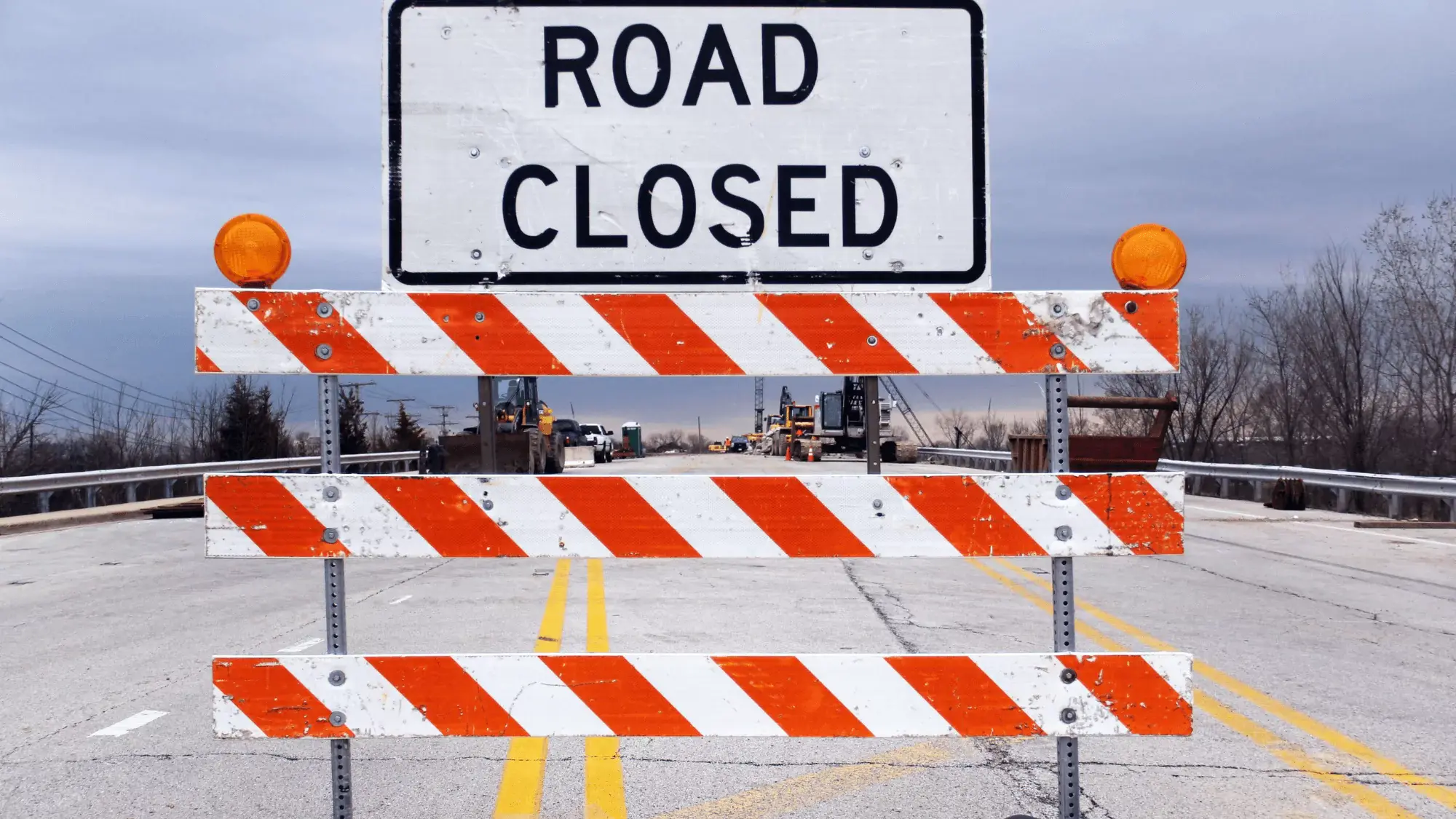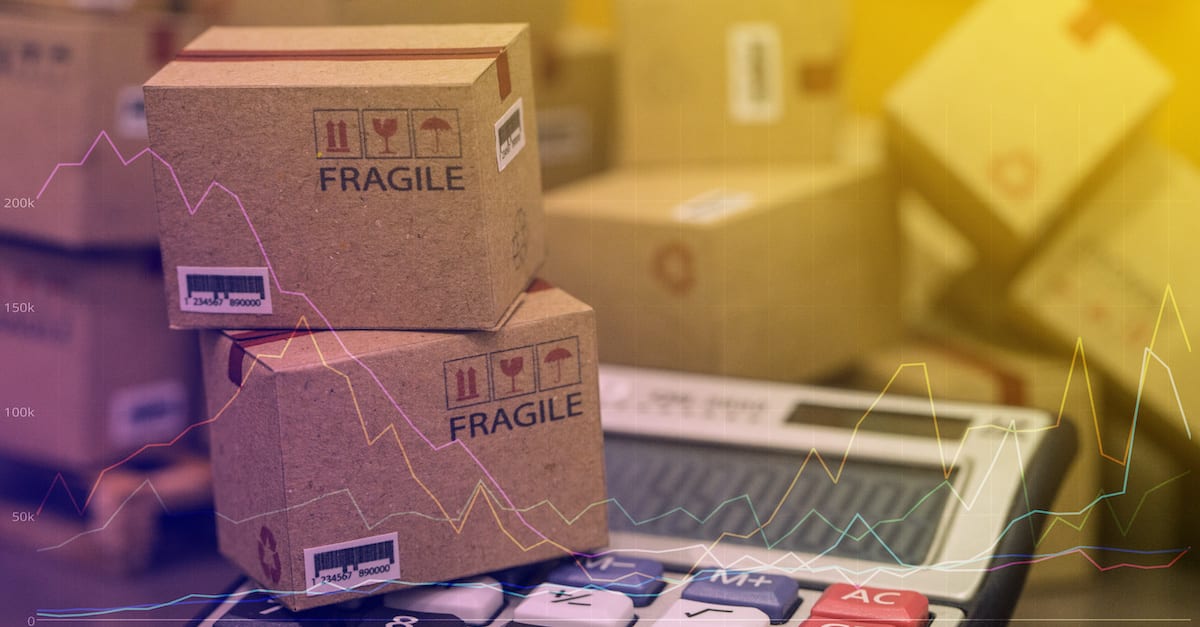
Global supply chains are more intricate and unpredictable than ever. From geopolitical events to natural disasters, businesses face a myriad of risks when it comes to inbound freight. Delays, damage, theft–any disruption can significantly impact your bottom line. That's why a proactive approach to risk management is crucial.
By "risk-proofing" your freight, you can minimize disruptions, safeguard your goods, and ensure the smooth flow of your supply chain, even in the face of uncertainty.
Understanding the Risks in Inbound Freight
Let's face it: inbound freight logistics can be a wild ride. In today's complex and interconnected world, getting goods from point A to point B is rarely a straightforward journey. We're not just talking about the usual suspects like traffic jams and bad weather (though those are certainly headaches!). We're talking about a whole spectrum of potential disruptions that can throw your supply chain into a tailspin.
To navigate this landscape effectively, you need a keen understanding of the risks involved. Let's break them down:
Transportation Risks
Think of this category as the "uncertainty principle" of freight. Trucks break down, ships get stuck sideways in canals (we're looking at you, Ever Given!), and blizzards can bring entire regions to a standstill. These are the inherent risks that come with moving goods across vast distances, and they can range from minor inconveniences to major catastrophes with global repercussions. Remember, it's not just about if these disruptions will happen, but when.
A prime example of a transportation risk is the Suez Canal blockage in 2021. When the container ship Ever Given ran aground, it caused a massive disruption in global supply chains, delaying shipments for weeks and causing significant financial losses for businesses worldwide.
Operational Risks
Believe it or not, sometimes the biggest threats to your inbound freight aren't lurking out in the world, but rather within your own organization or those of your partners. Poor communication, a lack of visibility into your shipment's whereabouts, and outdated, inefficient processes can all create frustrating bottlenecks and costly delays. And the numbers don't lie: a recent survey revealed that a staggering 43% of businesses experienced supply chain disruptions due to internal operational issues! That's a wake-up call if we've ever heard one.
External Risks
Now, here's where things get really interesting (and potentially scary). We're talking about forces outside your control–the geopolitical tensions that flare up unexpectedly, the natural disasters that strike without warning, the economic rollercoasters that can leave you feeling queasy, and yes, even the occasional global pandemic that throws the entire world into disarray.
The COVID-19 pandemic, in particular, serves as a stark reminder of the disruptive power of external risks. Lockdowns, border closures, and labor shortages caused widespread delays and shortages, forcing businesses to re-evaluate their supply chain strategies. These external shocks can send shockwaves through your carefully constructed supply chain, forcing you to adapt on the fly or face the consequences.
Cargo Security Risks
Unfortunately, there's a darker side to the world of freight. There are those who would love nothing more than to get their hands on your valuable cargo. Theft, damage, and loss during transit are a constant threat, and the financial impact can be devastating. Estimates suggest that cargo theft in the U.S. alone results in annual losses ranging from a mind-boggling $15 billion to $30 billion. That's enough to make anyone lose sleep.
The reality is, inbound freight is inherently risky. But by understanding the potential pitfalls, you can take proactive steps to mitigate those risks, safeguard your shipments, and keep your supply chain humming along smoothly. Knowledge is power, and in the world of freight, it can be the difference between success and disaster.
Proactive Strategies for Risk-Proofing Your Freight
Now that we've explored the potential hazards lurking in the shadows of your inbound freight, let's talk solutions. Simply reacting to disruptions as they pop up is no longer a sustainable solution. In today's unpredictable world, you need a proactive strategy to "risk-proof" your freight and build a supply chain that can weather any storm.
Diversification
Remember that old saying about not putting all your eggs in one basket? Well, it holds true for your supply chain, too. Diversifying your suppliers, transportation modes, and routes is like having a backup generator for your backup generator. Spread your reliance, and you reduce the impact of any single disruption.
Think of it this way: if you rely solely on one carrier and they suddenly experience a major operational hiccup (a cyberattack, perhaps, or a fleet-wide breakdown), your entire inbound freight flow could come to a screeching halt. But if you've wisely partnered with multiple carriers or utilize a mix of road, rail, and sea transport, you've got alternative pathways to keep those goods moving. It's like having a detour route ready when there's construction on the highway.
Visibility and Tracking
In the age of instant information, who wants to be left in the dark? Real-time visibility and tracking are no longer a luxury but a necessity. Embrace technology solutions like GPS tracking and Transportation Management Systems (TMS) to gain a bird's-eye view of your shipments. Know where your goods are at any given moment, anticipate potential delays, and take action before a minor hiccup turns into a major headache.
With this level of visibility, you're not just reacting to problems; you're anticipating them. It's like having a crystal ball for your freight, allowing you to proactively manage exceptions, communicate updates to stakeholders, and prevent disruptions from derailing your operations.
Strong Relationships
In the world of freight, it's not just about what you know; it's about who you know. Building strong relationships with your 3PL, carriers, suppliers, and other key players is like having a network of allies in your corner. Open communication, collaboration, and mutual trust are the foundations of a resilient supply chain.
When unexpected events occur (and they inevitably will), those strong relationships become your lifeline. Need to expedite a shipment? Reroute it at the last minute? Having a solid rapport with your 3PL can make all the difference. It's like having a friend in the business who's always willing to go the extra mile. A provider can manage carrier networks on your behalf, allowing you to condense time requirements while maintaining those oh-so-valuable relationships.
Insurance and Contingency Planning
Even the best-laid plans can go awry. That's why it's crucial to prepare for the unexpected. Secure comprehensive cargo insurance to protect yourself from the financial fallout of those unforeseen events–the accidents, the thefts, the natural disasters. Think of it as your safety net, cushioning the blow when things go wrong.
But don't stop there. Develop robust contingency plans to address potential disruptions before they occur. This might involve having alternative sourcing options, backup transportation arrangements, or pre-negotiated agreements with carriers for expedited services in emergencies. Contingency planning is like having a Plan B (and maybe even a Plan C) ready to go, ensuring you can navigate those unexpected challenges with minimal downtime and maximum business continuity.
By embracing these proactive strategies, you're not just managing your inbound freight but mastering it. Diversification, visibility, strong relationships, and contingency planning are the pillars of a risk-proof approach, enabling you to navigate the complexities of global supply chains with confidence and keep those goods flowing smoothly.
Implementing a Proactive Inbound Freight Management Strategy
Okay, we've talked about the risks and the strategies, but how do you actually put this proactive approach into action?
-
Risk assessment: First, you need a clear picture of your vulnerabilities. Conduct a thorough risk assessment of your inbound freight operations. Analyze your current processes, transportation modes, supplier network, and historical data to pinpoint those areas that are most susceptible to disruptions. Think about geographic risks, political climates, weather patterns, and potential bottlenecks in your supply chain. This assessment is your roadmap to building a more resilient system.
-
Process optimization: Inefficient processes are like cracks in your supply chain's foundation. Streamline your operations to eliminate errors, delays, and unnecessary costs. Implement standardized procedures for everything–receiving, inspecting, documenting – to reduce the risk of human error and ensure consistency. And don't be afraid to embrace automation! Those manual tasks are just begging to be streamlined.
-
Technology adoption: Freight tech is your secret weapon in the fight against freight disruptions. Leverage tools like TMS to gain real-time insights into your shipments, automate tasks, and optimize routes. Predictive analytics? That's like having a crystal ball for your freight, allowing you to anticipate disruptions and adjust your plans accordingly. Embrace the power of technology, and watch your efficiency soar.
-
Continuous improvement: The world of inbound freight is constantly evolving, so you can't afford to stand still. Regularly review and improve your processes to adapt to changing conditions and stay ahead of emerging risks. Monitor KPIs and use that data to drive continuous improvement. Remember, it's not a one-time fix; it's an ongoing journey.
By implementing these steps, you're not just managing your inbound freight, but transforming it. You're building a proactive, resilient, and efficient system that can navigate the complexities of today's global supply chains.
Taking Control of Your Inbound Freight
We've covered a lot of ground in this exploration of inbound freight. You now have a solid understanding of the potential risks, and you're equipped with proactive strategies to mitigate those risks and build a more resilient supply chain. But putting those strategies into practice can be a complex undertaking. It requires expertise, dedication, and a commitment to continuous improvement.
If you're feeling overwhelmed, remember that you don't have to navigate this alone. Customodal offers comprehensive solutions to help businesses optimize their inbound freight operations. Our team of experts can assist with every step of the process, from conducting thorough risk assessments to implementing cutting-edge technology solutions.
Ready to take your inbound freight management to the next level? Contact Customodal today to learn how we can help you achieve your goals and build a supply chain that can withstand any challenge.





